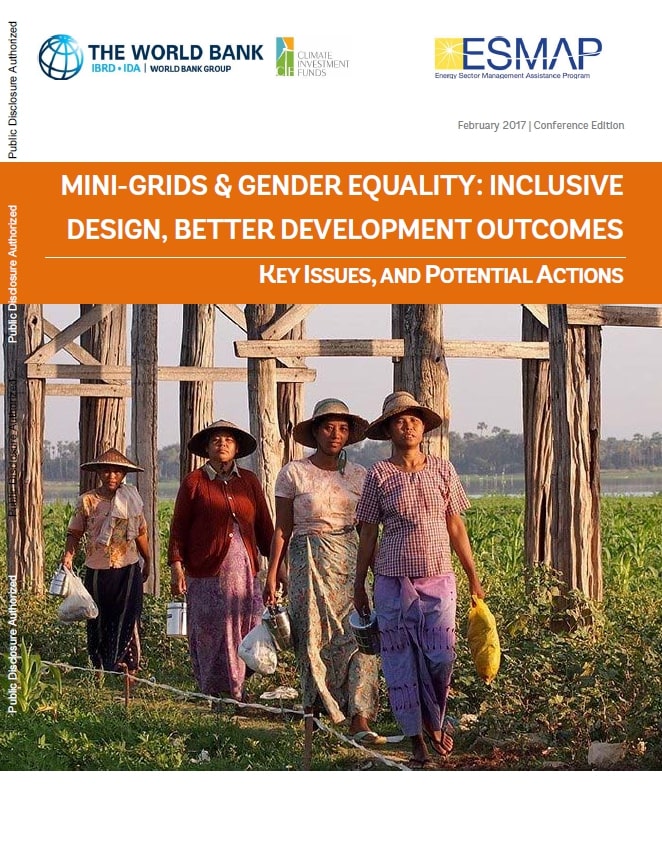Mini-grids and gender equality : inclusive design, better development outcomes
 |
Key issues, and potential actions
outil d'aide à la décision Feb 2017 ; 16 pages
Ed. ESMAP - Washington World Bank - Washington
Téléchargeable sous format: PdF
Téléchargeable chez l'éditeur
Page de présentation d'un éditeur
Abstract:
This note is intended to serve as a quick reference guide for applying a gender lens to the design and implementation of a mini‐grid to enhance development outcomes. As mini‐grids are increasingly seen as a potential solution to energy access issues, importance must be placed on ensuring that the benefits and opportunities of the intervention are realized for both men and women. The guidance below provides energy access, social development and gender specialists, with additional ideas and best‐practice approaches to integrate at all stages of the project cycle in order to enhance gender equality. Contents:
Introduction p.1
What is a Mini‐Grid? p.1
Improving Gender Equality Outcomes through Mini‐Grid Projects p.2
Levels of Gender Actions in Mini‐Grid Projects p.4
Entry Points in Mini‐Grid Business Models p.5
Entry Points in Consumer Finance Models p.6
Entry Points in Community Consultation and Planning p.7
Entry Points in Customer Engagement p.8
Entry Points in Productive Uses of Electricity p.8
Entry Points in Monitoring and Evaluation p.10
Entry Points on Policy and Procurement p.11
Conclusion p.12
Publics-Cibles:
Association , Acteurs de coopération , Socio-économiste , Décideurs locaux ou nationaux
Mots clefs: |
genre (CI) (DT) (OP) (ope) , mini-réseau micro-réseau (CI) (DT) (OP) (ope) |
Editeurs/Diffuseurs: |
|
ESMAP
-
Energy Sector Management Assistance Program - Washington - Etats Unis |
World Bank - Washington - Etats Unis |
En cas de lien brisé, nous le mentionner à communication@pseau.org